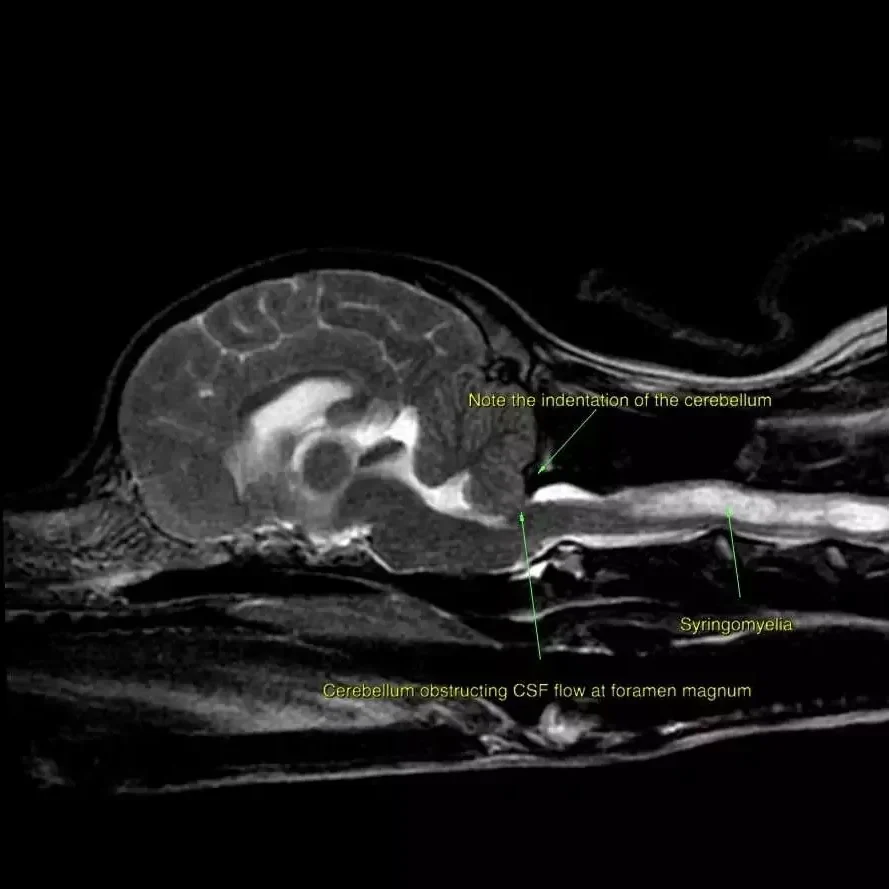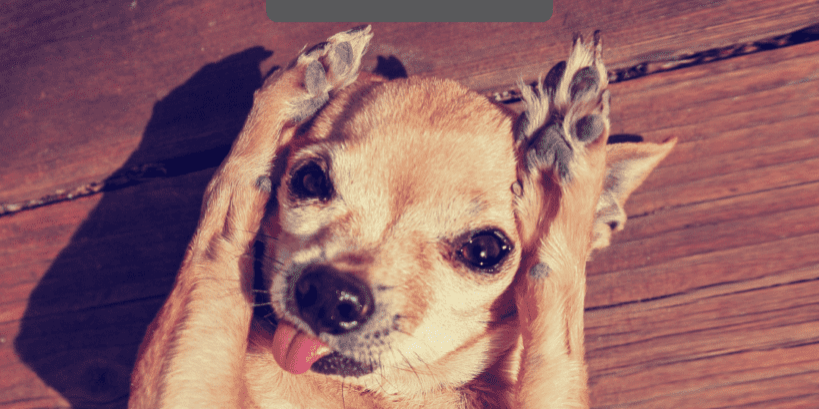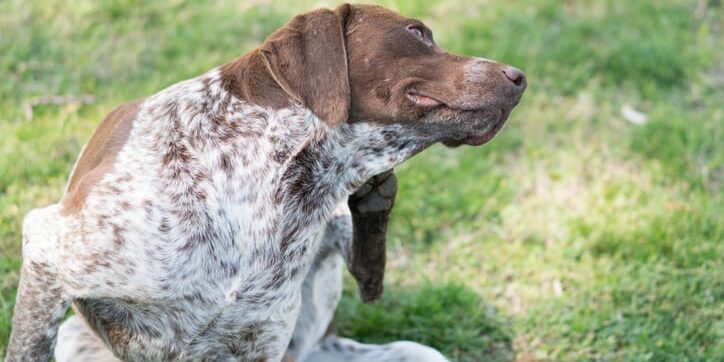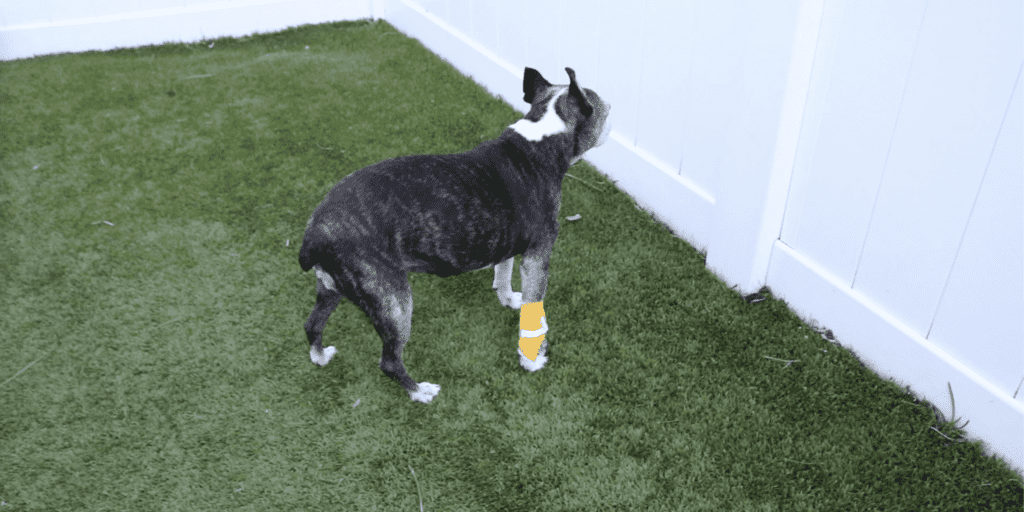Chiari Malformation (CM) and Syringomyelia (SM) in Dogs
What are CM and SM?
If you have a Cavalier King Charles Spaniel, they likely have Chiari-like malformation (CM). This inherited condition is also found in Chihuahuas, Brussels Griffons, and Yorkshire Terriers. CM is an abnormal growth of bone that develops in the back of the skull, making the skull too small for the brain. This puts pressure on the part of the brain called the cerebellum, affecting the flow of cerebrospinal fluid from the brain. This change in flow and pressure may result in syringomyelia (suh-reen-go-my-ee-lee-uh) or SM, a fluid-filled pocket that forms in the spinal cord causing pain and other neurological symptoms.
CM and SM are inherited conditions in the Cavalier King Charles Spaniel and likely inherited in other high-risk breeds. All Cavalier King Charles Spaniels have CM to a degree, and about 50% have SM. However, not all dogs with one or both conditions show clinical signs.
If you suspect that your dog has CM/SM, contact one of our locations today.
What are the symptoms of CM/SM?
Clinical signs that may occur if your dog has Chiari-like malformation and/or syringomyelia include:
- Rubbing at face
- Scratching at ears, neck, or back of head
- Phantom scratching (scratching without making contact)
- Sensitive when touched around back of neck or shoulders
- Pain or discomfort when active, excited, wearing collar, or even passing stool
- Low head carriage
- Change in behavior (less playful, withdrawn)
- Limping, limb weakness, or poor coordination
- Scoliosis

The Best Way to Diagnose CM/SM in Your Dog
Frequently, a diagnosis is not made quickly since this condition is not commonly recognized by many veterinarians and the signs can be somewhat difficult to appreciate until the disease progresses. Please contact us right away if your dog has any of the symptoms listed above.
To diagnose your dog’s condition as accurately as possible, the veterinary neurologists at Southeast Veterinary Neurology (SEVN) use high-field MRI, which is more powerful than low-field MRI and obtains clearer images more quickly. MRI has a greater range of soft tissue contrast and reveals the anatomy of the brain and spinal cord in more detail than other diagnostic tools. It is also more sensitive to changes within the structure of the brain and spinal cord. Low field MRI, computed tomography (CT), and myelograms are not recommended to achieve this diagnosis.
How can we treat CM/SM?
Our neurology team approaches CM/SM on a case-by-case basis.
- First, one of our vet neurologists needs to examine your dog and evaluate its medical history.
- Next, we use our high-field MRI machine to properly screen your dog and make an accurate diagnosis.
- Following the diagnosis, we may suggest one of two possible treatment options:
- Medical management involves using neuropathic pain medication and medication to reduce spinal fluid production.
- Surgical management involves removing the bony malformation at the back of the skull to give the brain more space and allow the cerebrospinal fluid to flow out of the brain. We recommend surgical treatment for advanced cases, patients with a larger pocket, and patients that do not improve fully with medical management.
Canine Chiari Early Screening Package $1500
Since Chiari-like malformation is inherited, breeding guidelines have been put together to minimize the breeding of dogs that are likely to produce puppies that will become affected by this condition. Not all dogs with CM will have overt clinical signs, so it is not safe to assume a dog is appropriate for breeding based on a lack of symptoms.
At SEVN, we offer breeders and pet parents of asymptomatic at-risk breeds heavily discounted screening to identify CM as early as possible. Through early diagnosis, breeders can select appropriate mates, pet parents can be better prepared, and progression of the disease can be slowed.
Related Articles



